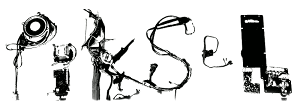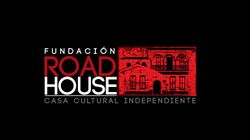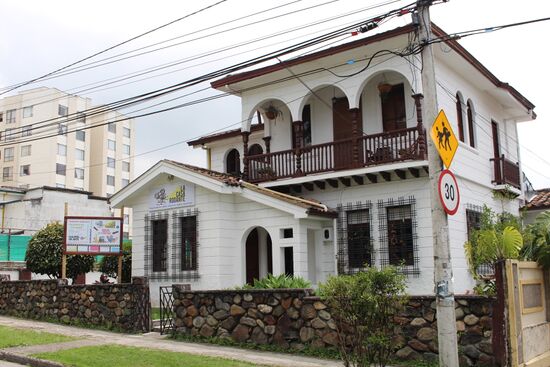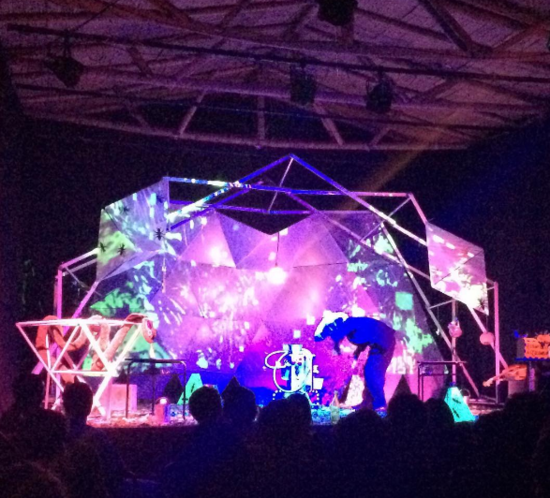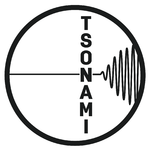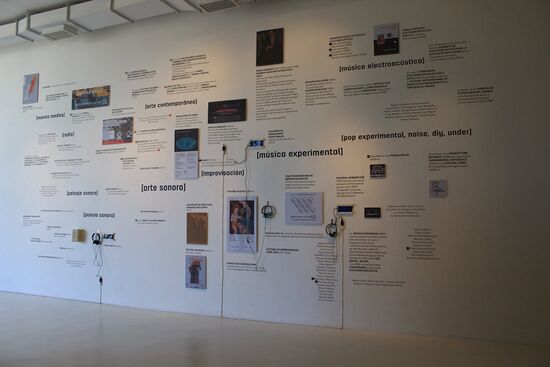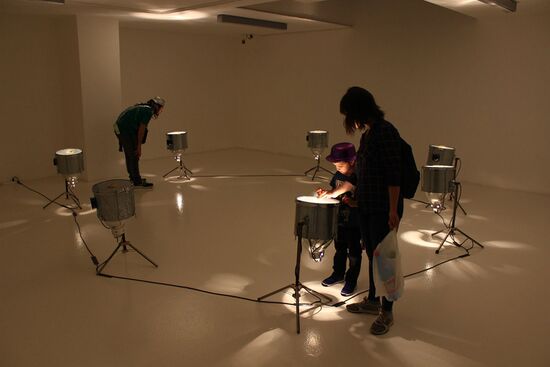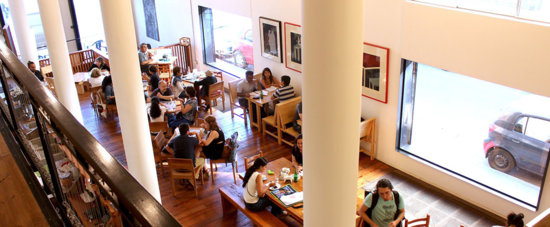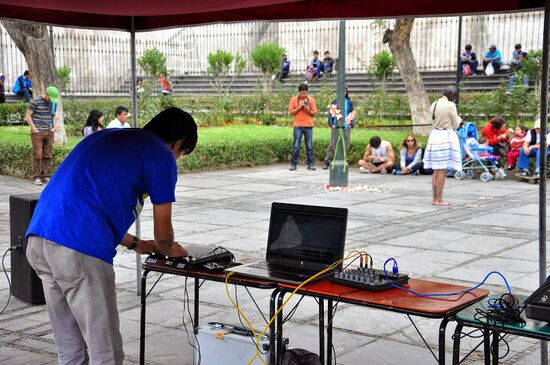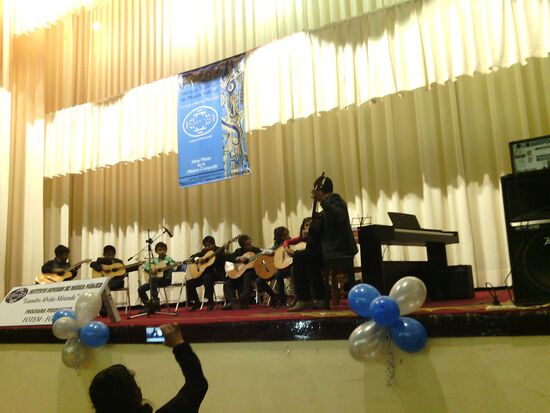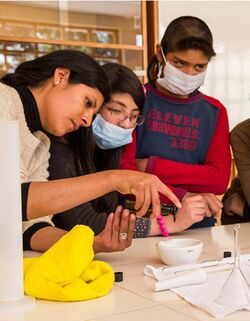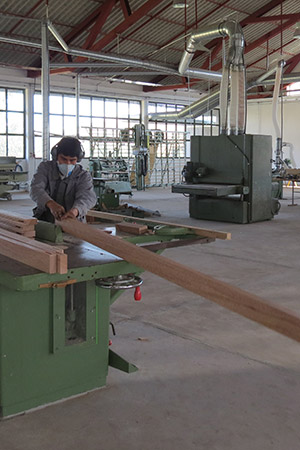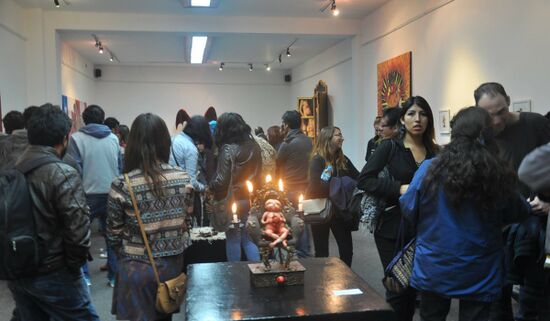TransPiksel 2021

TransPiksel COLOMBIA, Manizales, 11 - 18 June
Transpiksel 2017 Manizales articula diferentes acciones junto a colectivos y artistas locales, para presentar talleres, exposiciones, conciertos audiovisuales con artistas locales e internacionales que trabajan en el arte y la tecnología con un enfoque especial en live coding, ciencias ambientales y la electrónica artesanal.
PROGRAMA
13 junio
- 7pm | [Auditorio Confamiliares]
- TRANSPIKSEL 2017: OPENING Concerts
- CONCIERTOS - INAUGURACIÓN TRANSPIKSEL 2017
- Solo Performance | John Hegre (Noruega). Improvisación y ruido, retroalimentación utilizando cajas de guitarra .
- https://www.youtube.com/watch?v=U9f1dXeflgE
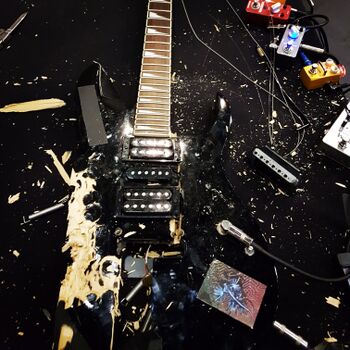
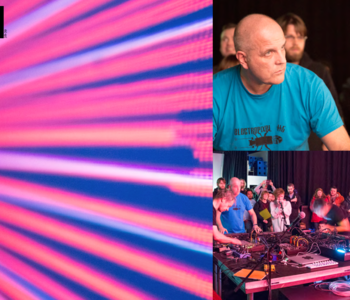
- LIVE CODING | Alexandra Cárdenas (Colombia)
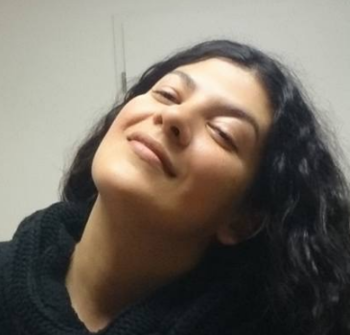
14 junio
- 2pm-7pm | La Casa Rodante
- TALLER: DIN (Din Is Noise) - Juan Jaramillo | PLATOHEDRO
- Inscripciones: lacasarodanteproducciones(at)gmail(dot)com
- EXPOSICION: [| Video Program. Several Artists. | PIKSELSAVERS]
15 junio
- 2pm-7pm | La Casa Rodante
- 7pm"
- AV CONCERTS | CONCIERTOS AUDIOVISUALES
- Distopic Dj y Vj Live Headshot y Mr Lover
16 junio
- 2pm-7pm | La Casa Rodante
- TALLER: Construcción de instrumentos utilizando pedales de guitarra + Señal Eléctrica retroalimentada | John Hegre
- Inscripciones: lacasarodanteproducciones(at)gmail(dot)com
- EXPOSICION: [Video Program. Several Artists. | PIKSELSAVERS]
- 7pm"' | Matiz taller editorial - Casa Diseño
- EXPOSICION: Exposición Estratosfera
- CONCIERTOS
- Concierto Experimental
- Máquinas Mestizas | Jorge Barco & El glaciar Jökulsárlón | Maite Cajaraville
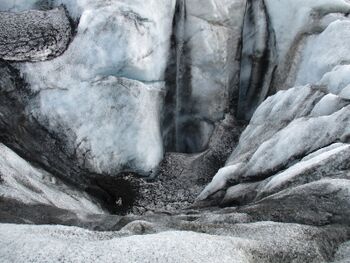
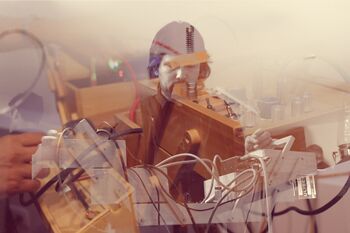
- 9pm EXPOFERIAS
- ALGORAVE
All artists from ISEA are invited to participate, Please contact Alexandra Cárdenas at tiemposdelruido(at)gmail(dot)com
17 junio | La Casa Rodante
- 2pm-7pm | Espacio Fundación Telefónica
TransPiksel CHILE, Santiago de Chile, 19 – 25 June
TransPiksel PERU, Cuzco, 27 June - 4 July
TRANSPIKSEL (english)
Four days of workshops, exhibitions, audiovisual concerts and a BioARt Lab with international and local artists working on art and technology with a special focus on bioart, environmental sciences and DIY electronics to be held in Arequipa, Cuzco (Perú), Santiago de Chile (Chile) and Manizales (Colombia).
June- July 2017
Technical needs
Video program
1 projector + 1 screen + audio system
Concerts:
- Para los conciertos: (podemos usar el mismo proyector y equipo de sonido del programa de video si están en la sala principal, durante el día se ponen los videos y por la noche los conciertos)
1. Equipo de sonido con subwoofer de graves: Un PA que puede entregar 110 dB SPL sin distorsión en todas las áreas de la sede con una gama completa (20Hz – 20kHz). 2. Un amplificador de guitarra eléctrica, One Fender Twin (or similar) 3. Mesa de sonido de 8 canales, pueden ser menos o más, nos podemos adaptar a lo que haya. 4. Proyector y pantalla con entrada S-video o composite, HDMI y VGA 5. Una mesa sólida y un martillo
- Para el ALGORAVE:
Si queremos tener músicos online necesitamos además una conexión a internet de 10 megas. (de las normales).
Para la exposición
- DNA to NSA
2 monitores o Tv con sonido integrado y entrada HDMI. 1 teclados con salida USB y 1 ratones de dos botones y monitores HDMI (solo se necesitan para la instalación, 3 días antes del montaje.) 1 mesa 1 trípode de luces para colocar la cámara con una pinza 1 luz tipo flexo Led light (de los de Ikea) 1 vaso para poner en el mezclador (puede ser un vaso de cristal de una cafetera de embolo que vienen sin mango). Otros: Jabón o gel de baño que tenga sodium laurel sulfate en los ingredientes, zumo de piña, vodka y sal. 4 boles/vasos cilíndricos, 3 cuentagotas, una cucharita, unos palitos planos largos (pueden ser palillos de dientes, pero mejor algo un poco más largo y más plano)
- Climate 1850 – 2016
Solo necesita un espacio para mostrar
Para los talleres
-Agit POP: Alexandre Castonguay
Rechargeable Battery (6v 2A) (I can’t bring one on the flight over) Battery charger (6v) or North american <-> Europe power converter 1 soldering iron for each 3 participants Tables and power for everyone Well-ventilated space Sufficient light for soldering A projector Access to the network is required
-John Hegre
Technical riders
Need electricity, soldering iron, screwdrivers, clippers, some sort of amplification, any sort of amplification and we take it from there. The bigger and more powerful amplification/guitaramp/PA - the more fun! This is a personal preference, quiet is more challenging and also much fun.
Anything participants need to bring to the workshop?
One cheap/crappy/broken electric guitar they are not afraid to modify. It is also possible to modify more "fine" instruments/guitars but my main focus will be in the cheap end of the scale and the possibilities there. Participants may also bring other acoustic instruments/objects for modification.
-DIY BioLab: Falta ser definido
Keywords
sound art, sound installation, video research, interactive video, video performance, interactive installation, stand alone video loop (pikselsavers), textile gadgets, DIY BioHacking, visual programming and live coding.
Partners
TransPiksel is initiated by: Piksel
organised by:
in Colombia: | The Road Hose Foundation, La Casa Rodante
in Perú: | Asimtria
![]()
in Chile: Festival Tsonami & Casa Plan
Funded by:
In Norway: TransPiksel is funded by the Norwegian Ministry of Foreign Affairs, OCA, Bergen Kommune, Piksel Festival;
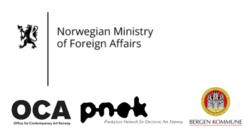
Collaborators:
In Colombia: | ISEA International Symposium for Electronica Arts, | Festival Internacional de la Imagen, | Universidad de las Caldas
In Peru: | Instituto Superior de Música Público "Leandro Alviña Miranda" del Cusco, | Asociación Pukllasunchis / Institución Educativa Pukllasunchis, | Casa de la Cultura de Cuzco
Project Description
Piksel, in collaboration with its partners, is initiating TransPiksel, a South American touring lab comprising 3 countries: Colombia, Chile and Peru. Our partners are museums, artist-run organisations and other non-profit cultural institutions.
Four days of workshops, exhibitions, audiovisual concerts and a Bioart Lab with international and local artists working on art and technology with a special focus on bioart, environmental sciences and DIY electronics held on each city: Cusco (Perú), Manizales (Colombia) and Valparaíso (Chile).
The Piksel team have chosen a representative group of artists and works from Piksel Festival participants in order to present the most innovative artistic research on new and emerging technologies based on openness and free cultural practice.
The international group of artists are Camilla Vatne Barratt-Due (NO), Alexandra Cárdenas (CO), Gisle Frøysland (NO), John Hegre (NO), Alexandre Castonguay (CA), Pierre Padilla (PE), Juliana Londoño Murillo (CO), Carlos Pedreros (PE) and Maite Cajaraville (ES).
The works range from sound art, sound installation, video research, interactive video, video performance, interactive installation, stand alone video loops (pikselsavers), DIY BioHacking, visual programming and live coding.
Curators 2017 Gisle Froysland (Norway), Maite Cajaraville (Spain), Marco Valdivia (Perú), Fernando Godoy (Chile), Juan David Ruzzo (Colombia).
Transpiksel will take place in June and July 2017.
Statement
The development, and therefore use, of digital technology today is mainly controlled by multinational corporations. Despite the prospects of technology expanding the means of artistic expression, the commercial demands of the software industries severely limit them instead. Piksel is focusing on the open source movement as a strategy for regaining artistic control of the technology, but also a means to bring attention to the close connections between art, politics, technology and economy.
With the emergence of internet and the democratisation of computers, the public are increasingly confronted with hybrid software and hardware, made by qualified artists using different titles: Artist programmer, software artist, digital artist or new media artist. These artists create their digital tools either by making them themselves or in close collaboration with programmers.
Piksel argues that the artists in all disciplines should have control over their own production. Therefore tools like open source software and open hardware is considered as the best practice. Internationally Piksel might be the most important forum for participants in this field, which more and more appear as a expanding movement with increased attention directed towards it.
Although coming from different economical and social backgrounds, Northern and Southern countries share a common interest in free culture: free and open source and technologies.
As curators and artists we aim to share our areas of interests: Do It Yourself (DIY) technologies, historical traditions of craftsmanship, environmental sciences, ancient biodiversity knowledge, synthetic molecular biotechnologies, understanding of plants, seeds and biochemistry traditions. All together intertwined with art practices.
Exhibition
PikselSavers, Several artists.
PikselSavers – screensavers that makes a difference!
PikselSavers is a screening programme of short movies and software art curated by the Piksel festival in Bergen. The programme is going to be selected among the contributions from artists working in a wide range of digital media and techniques at Piksel festivals.
PikselSavers take the screensaver as a point of departure and inspirational springboard. They are videos and software art based on the screensaver format – short audiovisual (non)narratives made for endless looping.
From "ppg256" | From Concrete Perl, Nick Montfort
Beginning in 2007, I wrote a series of seven very short Perl programs to generate poems. Each program in the ppg256 series consists of exactly 256 characters of code. The programs use no data sources except for strings in the code itself, no other programs or special libraries are invoked.
For What It's Worth, Pall Thayer
Contemporary art is driven by its success in a consumer-based society. In other words, it’s worth whatever someone is willing to pay for it. The complexity and intricacy of the work grows with every Bitcoin contribution.
Google Badwords, Wayne Clements
Google searches have a built-in autocomplete facility. If you enter a word, Google will offer search suggestions to save you time typing. Some words Google will not auto-complete. There is a list of these, compiled originally by Jamie Dubs. He published them here:http://www.slate.com/articles/technology/future_tense/2013/08/words_banned_from_bing_and_google_s_autocomplete_algorithms.html. It has been suggested that Google practises a form of censorship (http://fffff.at/googles-official-list-of-bad-words/) because of its list of proscribed autocomplete words. Google Badwords takes this word list and offers an alternative autocomplete service — it offers only autocomplete suggestions from Google’s banned word list. The result is almost always of a sexual nature. Google Badwords defies Google’s auto-censorship.” (source: http://www.in-vacua.com/googlebadwords/googlebadwords-info.html)
SnowStorm, Mark Beasley
SnowStorm takes a keyword ?=<keyword> and searches twitter for live results, adding a snowflake for every tweet as it is used. Density depends on the frequency of the word and its current usage on twitter.
Mark Beasley is an active member of the chicago arts + new media community. Mark makes software, video, performance, and web art and has participated in exhibitions with organizations like Rhizome.org, Gallery-2 and Links Hall. He is a member of H3X3N, the computer witchcraft club that produces the IX series which has been exhibited internationally. Mark has also lead workshops in python, hardware hacking, micro-controllers, and html/javascript. He is currently a teaching assistant at Marwen, an arts middle/high school for under-served youth and a full-time web developer along with other freelance projects.
54 Dinamic Body Background, Osvaldo Cibils
54 DINAMIC BODY BACKGROUND is an online animation work, developed in java script, and based on animated GIFs and sound. Developed between 2006 and 2010.
Osvaldo Cibils is visual and sound artist, born 1961, in Montevideo, Uruguay. He now lives and work in Rovereto, Italy. http://osvaldocibils.com http://osvaldocibils.com/54/54.html
Video Program
Up and away, Alexander Senko
The visuals consists of the background and figures. Figures are created by and interact with the background – architectural forms of the new building of the Bauhaus University Library (Weimar, Germany). The Fourier resynthesis allows every moving object to create its own frequency band. The work is made in real-time programming environment Pure Data and can be shown either as a video film or as a real-time performance.
The sound of bureaucrocy, Delia Cristina Gheorghiu
If bureaucracy had a voice how would it sound? How does an invoice sound? What about a fragment from an emergency ordinance?The starting point of the work is the difficulty encountered by Romanians who wanted to implement various projects in various areas using money from Norway Grants. The difficulties they encountered were mainly due to the heavily bureaucratic system in Romania. The work reflects something deeper, continuous, seemingly impossible to change – heavy bureaucracy.Using the Ruby programming language an application was created. Through this application each word in the selected texts is randomly associated two sounds (one for vocals and one for consonants in the word). Once attached to a word the sound is repeated through a document every time that particular word appears. The texts are fragments from the codes used to identify a public purchase, a fragment from an emergency ordinance on public purchase, two forms, an invoice and a receipt. The words in these documents are attached only low-frequency sounds of 80 instruments which were selected from a media library.Played in loop these sounds are meant to render the quantity of ”bureaucratic noise” that each of us in Romania and possibly anywhere in the world are supposed to put up with every day.Work by: Delia-Cristina Gheorghiu Programmer: Eugen Minciu
Music Obfuscator, Benjamin Grosser
At the behest of corporate copyright holders, media sharing sites like YouTube and Vimeo have implemented listening algorithms designed to identify uploaded music. These “Content ID” systems are designed to presume all use is illegal use; every match is automatically flagged, muted, and/or removed. Music Obfuscator enables users to hide music from Content ID. Each audio track submitted to the Obfuscator will be altered using a variety of signal processing techniques.
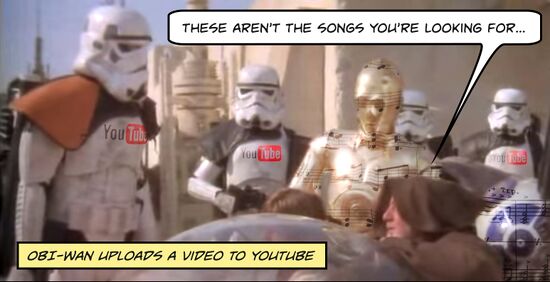
Do Americans Dream of Being Electric Sheep?, Gabin Cortez Chance
A multi layered, and distorted Video dissecting and critiquing the United States NSA spying programs. Using an overload of visual information similar to the NSA meta data collection practices to tell a abstract narrative of a Orwellian magnitude. With the idea that some Science Fiction writers (Phillip K. Dick…etc) might have not been so far off in their predictions of the future. And how in a digital world, everything(including nature) is now mediated to us, and is vulnerable to digital distortion, and corrupted files. And that maybe these distorted, and damaged images can have a new life in a different context. And under a different light can enter the world of the Hyper-real. A world of Simulacrum.
Gabin Cortez, my Art must have some kind of Political, and Philosophical(usually one and the same) direction. It must be about the now, looking through the lens of the past, progressing to the future. For me the Digital is my Magic wand of the Hyper-Real, and my Simulacrum of Geist. How could this be for sale. It is a Gift assembled from the best parts of other Gifts. From a long line of Artists,Thinkers, Witch Doctors, and Prophets going all the way back to those afore mentioned Caves. And probably even before that.
4 instalaciones (4 pc’s) + 1 programa de video en un proyector, puede ir con un ordenador también o con un disco de multimedia.
Piksel - 4 raspberry pi - 1 disco duro multimedia conectado
Needs - 4 monitores HDMI o TV grandes, pueden estar sujetos a la pared o sobre peanas. - 4 teclado + 2 ratón para la instalación (USB) - 1 projector
Cociclo, Alexander Castonguay (Canadá)
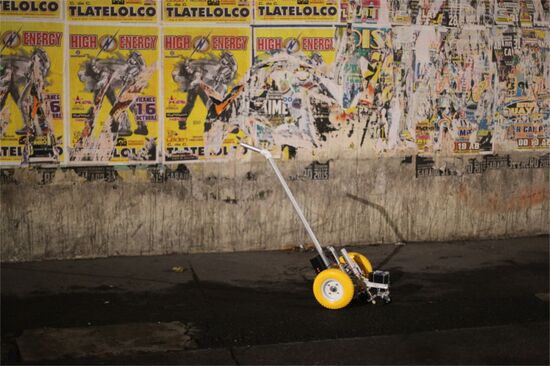
Cocíclo proposes a participative experience that occurs in the streets of the MX. It enables a reflection on the collection and visualization of data. It consists in an electronic circuit that responds to the concentrations of pollutants in the air of our cities. In its wearable form, it emits audible beeps that augment in frequency following the increase in carbon monoxide (CO) concentrations, a bit like a Geiger-counter. The participants build a visualization of geolocalized-data collectively through the experiences of ‘audio augmented dérives’.
Año: 2015
From DNA to NSA, Maite Cajaraville (Spain) & Gisle Frøysland (Norway)
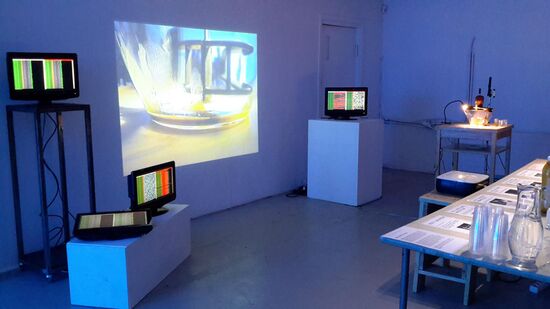
Descripción breve: Laboratorio casero (Do-It-Yourself) de extracción de cadenas de ADN y sonificación y visualización de búsquedas sobre información genética en ordenadores Raspberry Pi, monitores y proyector, agitador magnético. Año: 2015
Espacio requerido:
Habitación o zona de exposición 3 x 4 metros mínimo.
Llevamos:
- 5 Raspberry pi modelo https://www.raspberrypi.org/products/raspberry-pi-3-model-b/ - 1 cámara webcam con salida USB - 1 mezclador magnético DIY
Necesitamos
- 4 monitores o Tv con sonido integrado y entrada HDMI. (pueden ser solo 2) - 4 Podiums a distintas alturas para montar los monitores - 1 proyector con entrada RCA y HDMI - 1 pantalla o proyectamos sobre pared blanca - 2 teclados con salida USB y 2 ratones de dos botones y monitores HDMI (solo se necesitan para la instalación, 3 días antes del montaje.) - 1 podium medio para el vaso mezclador - 1 trípode de luces para colocar la cámara con una pinza - 1 mesa larga de 2 x 1 m - 1 luz tipo flexo Led light (de los de Ikea) - 1 vaso para poner en el mezclador (puede ser un vaso de cristal de una cafetera de embolo que vienen sin mango). - Otros: Jabón o gel de baño que tenga sodium laurel sulfate en los ingredientes, zumo de piña, vodka y sal. - 4 boles/vasos cilíndricos, 3 cuentagotas, una cucharita, unos palitos planos largos (pueden ser palillos de dientes, pero mejor algo un poco más largo y más plano)
Climate 1850 – 2016, Alexandre Castonguay (Canada)
Porcelain visualisations of data from the average global temperatures from 1850 - 2017. The images are of the moulds in which I make strange unuseful porcelain objects that refer to household objects, like plates or light fixtures.
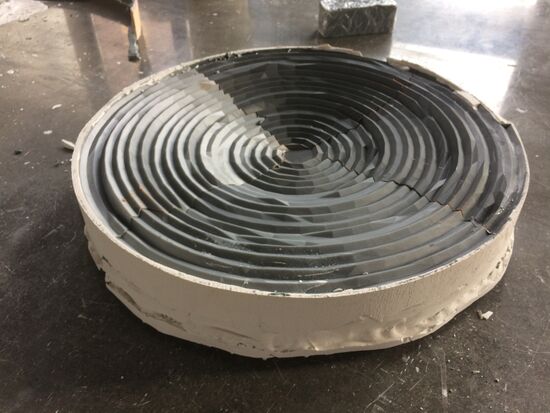
Unintended Emissions, Bengt Sjölén
Did you know your mobile phone is constantly talking behind your back? Without any action on your part, it emits a surprising amount of information into the environment. Unintended Emissions captures, dissects, uses and maps—in real time—the involuntary and invisible emissions of our mobile devices.
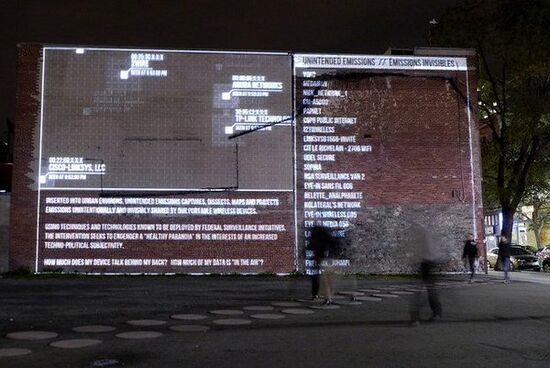
Concerts
Hammer and chisel, Gisle Frøysland / John Hegre


John Hegre & Gisle Frøysland Audiovisual noise improv Hegre delivers harsh noise and feedback using guitar and effect boxes. Frøysland plugs the audio signal to the videomixer, sends it to another videomixer and back, feedback, analog keying, analog filters.
Necesitan:
Equipo de sonido con subwoofer de graves A PA that can deliver 110 dBSPL undistorted in all areas of the venue with a full range (20Hz - 20kHz) One Fender Twin guitaramp (or similar) Sound mixer 8 channels / mesa de mezclas de 8 canales, pueden ser menos o más, nos podemos adaptar a lo que haya Proyector y pantalla con entrada S-video or composite Una mesa sólida y un martillo
glitch://ten.leskiPsnarT Gisle Frøysland (Norway)
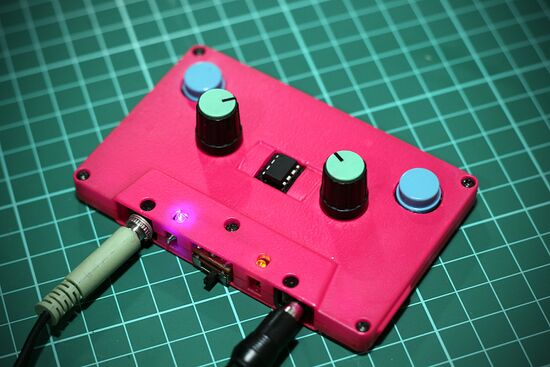
Audiovisual performance based on a mashup of primitive 8-bit functions and simple alphanumerical text streams pipes directly to the computer hardware generating overloading and constantly changing bursts of glitches and noise.
Necesita:
Equipo de sonido con subwoofer de graves Sound mixer 8 channels / mesa de mezclas de 8 canales, pueden ser menos o más, nos podemos adaptar a lo que haya Proyector y pantalla con entrada HDMI
ALGORAVE
The algorave is an event where different algoravers play visuals and sounds., where people can gather to dance and drink to music being created live using open source software.
Algoraves embrace the alien sounds of raves from the past, and introduce alien, futuristic rhythms and beats made through strange, algorithm-aided processes. It’s up to the good people on the dancefloor to help the musicians make sense of this and do the real creative work in making a great party.
Livecoding Impro Hlöðver Sigurðsson (Iceland)
This improvisation will be performed using Overtone where my goal is to use my own dynamic programmable sounds that can be transposed in algorithmic manner harvesting the power of high level programming language and the sound engine from Supercollider.
John Hegre, SOLO performance, John Hegre

John Hegre & Gisle Frøysland Audiovisual noise improv Hegre delivers harsh noise and feedback using guitar and effect boxes. Frøysland plugs the audio signal to the videomixer, sends it to another videomixer and back, feedback, analog keying, analog filters.
Necesitan:
Equipo de sonido con subwoofer de graves A PA that can deliver 110 dBSPL undistorted in all areas of the venue with a full range (20Hz - 20kHz) One Fender Twin guitaramp (or similar)
Máquinas mestizas, Jorge Barco
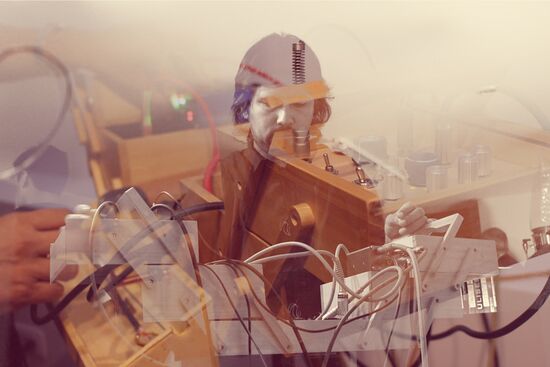
En varias cosmogonías, el Universo fue creado de un material acústico; cuentan que el mundo había sido creado por un sonido inicial que emergió del abismo, se hizo luz y gradualmente parte de esta luz se hizo materia. Pero esta materialización nunca fue completa, pues cada cosa continuaba conservando algo de sustancia sonora de la cual fue creada. Para este Performance Sonoro el artista ha construido un aparato que busca crear experiencias físicas inmersivas a través del sonido. Una maraña de sintetizadores y componentes electroacústicos que nos invita a pensar en la interacción humana con las máquinas, los universos físicos y espirituales a través del sonido.
Duración: 40 min
Requerimientos técnicos
Sound System Stereo con Subwoofer. Mixer de 8 o 16 canales. Micrófono Base para micrófono 2 regletas de energía de 5 conexiones 1 Mesa 1,50 x 80 (aproximadamente) Una silla Proyector de video con entrada VGA Computador con salida VGA
Jorge Bejarano Barco: Artista y productor cultural radicado en Medellín-Col. Desarrolla su trabajo creativo en torno a las artes electrónicas, investigando el mundo sonoro desde un enfoque transdisciplinar que involucra el ruido, y las tácticas críticas de reflexión sobre las tecnologías. Construye proyectos y artefactos sonoros, y explora sus posibilidades performativas. Ha desarrollado proyectos creativos en varios museos y centros culturales de Latinoamérica y Europa. Co gestor de los encuentros LabSurLab 2011, Cooperaciones 2012 y Medelab 2013. Actualmente trabaja como curador de proyectos especiales y dirige la Sala de Experimentación Sonora [Lab3] en el Museo de Arte Moderno de Medellín.
El glaciar Jökulsárlón, performance visual, by Maite Cajaraville
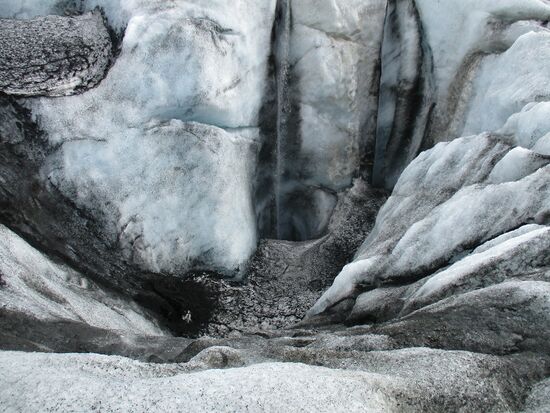
Inspirándome en las palabras de Constanza, pensé en el glaciar de Islandia, una masa de hielo que alberga flujos de agua interior, todo está conectado, como los corazones de Robota. Agua que circula, deriva y abre nuevas rutas. En 2011, entra en erupción el volcán Grimsvötn y su cenizas se esparcen sobre el glaciar Jökulsárlón. Se produce entonces una aberración sobre el color del glaciar, lo blanco se matiza con el negro provocando texturas y formas, ruido y arritmia visual. Las partículas de hielo se convierten en diamantes brillantes. La performance se realiza con el software libre LIVES desarrollado por Salsaman.
Workshops
Agit P.O.V (Petit Objet de Vélo), Alexandre Castonguay (CA)
Agit P.O.V (Petit Objet de Vélo) is a microhack for bicycles relying on the persistence of vision (POV) effect, the propaganda tactics of the russian avant-garde (AGIT Prop) and the SpokePOV Project by Limor Fried (LadyAda).
A modest 12 LED circuit, a microcontroller, codes, a battery mounted on your bicycle wheel and the speed of the cyclist suffice to illuminate the streets with your poetical-political message. AGIT P.O.V. invites participants to a workshop and textual performance in the streets of our cities. Our bicycles are vehicles that can carry our poetic and creative voices and agitate the city.
POV (Persistance of Vision) is a phenomenon based on the residual presence of an image on the eye for 1/25th of a second. The myth of persistente of vision posits that the human perception of motion is the result of persistence of vision. In this way, the drawings of the zootrope, the photographic experiments of Muybridge on the successive instants of a horse’s gallop produce the impression of the continuity of movement.
Within the development of this activity, kids are aiming to use the bike and to expand their critical thinking about the air pollution and the need to care about the natural environment of cities.
Live Coding With TidalCycles Alexandra Cárdenas
This workshop will allow the participants to gain the basic knowledge to make use of the software TidalCycles to create patterns of sound for a live coded performance. To know more about the software and start the installation process (recommended before the workshop) please go to: http://tidalcycles.org/ Participants are not expected to have prior knowledge of programming or music.
The workshop will consist of: 1. Software installation 2. What is live coding? examples, videos 3. What is TidalCycles? 4. Live coding with TidalCycles 5. Communal performance
After the installation process, TidalCycles allows very quick results but also allows space and ideas for deep questions about music and pattern of sound. Get ready to discover a new way to compose and produce music through live coding. Amount of assistants: 10 to 20 or more... no limit Requisites: Own laptop and headphones. Laptops can have Macintosh, Window and Linux platforms. Duration of the workshop: 3 to 4 hours
Din is noise Juan Jaramillo Noi Sk8 (Colombia)
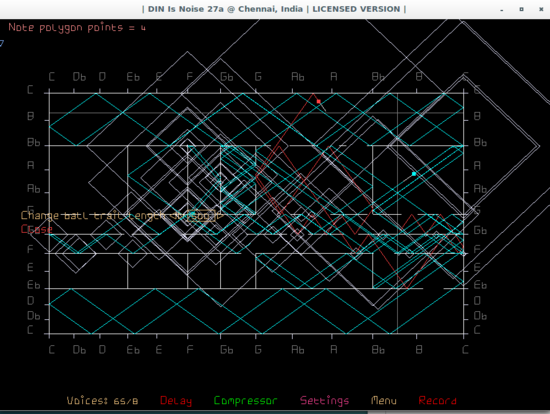
El taller pretende dar a conocer sin tanto tecnicismos como jugar con los parámetros, funciones y herramientas de Din Is Noise para crear sonido a partir de la imagen.
Din is noise es un software creado hace 10 años por Jagannathan Sampath <http://dinisnoise.org/bio/> . Pensado como un sintetizador inspirado en los sonidos microtonales de la antigua india, contiene una variedad de instrumentos "musicales" que se manipulan por medio de una interfaz gráfica muy amigable y envolvente.
Además vamos a analizar las ventajas que se pueden obtener usando el software por medio de sistemas operativos GNU/Linux. Otro ejercicio a realizar es crear un USB-live con un iso basado en puppy linux que contiene Din predeterminado y booteralo en un pc con windows [por ejemplo]
Duración: Hora y media Necesidades técnicas, Videobeam, amplificador de sonido y multitoma Los alumnos tienen que traer su propio computador, en lo posible una USB y ganas de compartir. Requisitos de los alumnos: Ningún conocimiento previo Número de participantes max 10 personas
Cociclo, Alexander Castonguay (Canadá)
- ESP
En este taller performativo los participantes van a ensamblar circuitos electrónicos que trasducen la concentración de monóxido de carbón (CO) en sonido audible. El diseño se construye a partir de un módulo wi fi Esp8266, un sensor de CO y un piezoeléctrico que permite la sonorización, geolocalización y visualización de datos conectados en un mapa o sitio específico. En este taller se combina el arte, el medio ambiente y la sociedad para poder crear a partir de de tecnologías libres y de código abierto. Los participantes aprenderán como funciona la electrónica utilizada para poder modificarla. Cociclo tiene una duración de 5 horas en las cuales durante el ensamblaje del circuitos el código se ira explicando. La instrucciones incluyen el uso básico del ESP8266 inalámbrico, su interfaz con un sistema móbil para la geolocalización y la visualización en un servidor. El grupo transitará por sitios específicos de la ciudad para recolectar s y experimentar el proceso de muestreo. Se invita a los participantes a que guarden sus Cociclos para poder alimentar un mapa colectivo en línea donde una creciente comunidad de usuarios puedan acceder a los datos de las variaciones de los contaminantes en tiempo real desde diferentes latitudes.
Requerimientos técnicos:
Batería recargable (6v 2A) Cargador de batería (6v) o convertidor de energía de USA <-> Europa 1 estación de soldadura por cada 3 estudiantes Mesas y tomas de corriente para 10 personas Espacio muy bien ventilado Buena iluminación para poder soldar Proyector Conexión a internet
Costo: El costo de los componentes es de 30$.
Participantes: 10 máximo, No es necesario tener experiencia, solo el interés por el arte, software y hardware libre así como el interés por el medio ambiente y su entorno social.
- EN
In this performative workshop, the participants will assemble an electronic circuit that translates Carbon Monoxide (CO) concentrations into audible sound. The design consists of an Esp8266 based circuit, a CO sensor and a piezo element that enables the sonification, geolocalisation and visualisation of collected data on a community map. The project mixes artistic, environmental and social concerns and adheres to the design principles of open hardware and software: Everyone is invited to learn how the electronics and the code functions in order to be able to modify it.
The workshop occurs over 5 hours in which the operations of the circuit and the code will be explained while assembling the circuit. The instructions will cover the basics of the esp8266 wireless chip, it’s interface with a mobile application for the geolocalisation and the visualisation on a map server.
The group will then ride or walk in order to experience a ‘situationist dérive’ that transforms our understanding of the city and collects a lasting reminder of our paths in Bergen. Participants are invited to keep their Cocíclos in order to continue building a collective map online where a growing community of users can access the contaminants’ variations over time.
Tech rider:
Rechargeable Battery (6v 2A) Battery charger (6v) or North american <-> Europe power converter 1 soldering iron for each 3 participants Tables and power for everyone Well-ventilated space Sufficient light for soldering A projector Access to the network is required
Costs: Costs of the components will be charged. (30$).
Participants: 10 maximum No experience necessary, only an interest in arts, free software and hardware, and/or social and environmental concerns.
Building simple instruments using guitar pedals | Construcción de instrumentos con pedales de guitarra, John Hegre
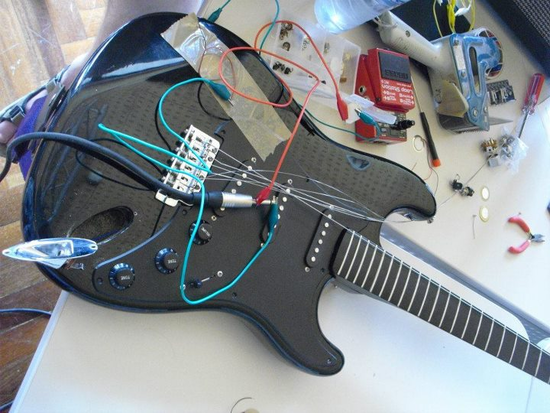
ES
Convierte tus instrumentos ya sea guitarra eléctrica o cualquier instrumento acústico que pueda transformarse en electroacústico. La duración del taller puede variar pero contemplamos de 2 a 4 horas. El taller está dirigido a aventureros y personas abiertas a la posibilidad de llevar más allá las reglas y límites tradicionales de su práctica. Tecnologías - micrófonos de contacto , pastillas de guitarra, cables, amplificación.
Taller en Inglés o con traducción 1 sesión de 3 horas 10 participantes Público objetivo: Músicxs, artistas sonorxs, investigadorxs musicales Materiales:
20 micrófonos de contacto, 40m. cable mono, 20 jack 5.6mm, 5m. estaño, amplificador de guitarra de 15 wats a más, proyector multimedia
Requerimientos de participación:
Guitarra eléctrica que se esté dispuestx a modificar, u otro objeto que unx desee convertir en objeto sonoro, pedales de guitarra o efectos similares.
Requerimientos técnicos:
Mesas y tomas de corriente para 10 personas Cautín Desarmadores Encendedores Amplificador Amplificador potente tipo PA para amplificar guitarra
Los participantes deberán traer alguna guitarra, vieja, descompuesta que no tengan miedo de modificar. Existe la posibilidad de modificar también instrumentos más “finos” o acústicos así como objetos instrumentales.
EN
Duration - depends on the local conditions, how long we are there and how much time the participants want to put into it. A general good length for a work session is frm 2 - 4 hours I guess. I am open for anything.
Description - Modify your instrument (electric guitar or any acoustic instrument that can be made electroacoustic)
Target audience: - any adventurous and open person who is focused on practice and possibilities of stretching the rules within and limits of the tradition of their practice.
Technologies - contact mikes, guitar pickups, cables, amplification..
Number of participants - ideally around 10, this also depends on how much time we have and how many want to participate. If more people want to participate I don´t mind adjusting the workshop for that.
Technical riders
need electricity, soldering iron, screwdrivers, clippers, some sort of amplification, any sort of amplification and we take it from there. The bigger and more powerful amplification/guitaramp/PA - the more fun! This is a personal preference, quiet is more challenging and also much fun.
Anything participants need to bring to the workshop?
One cheap/crappy/broken electric guitar they are not afraid to modify. It is also possible to modify more "fine" instruments/guitars but my main focus will be in the cheap end of the scale and the possibilities there. Participants may also bring other acoustic instruments/objects for modification.
DIY BioLab: How to mix molecular biology and electronics as new performances, David Chaupis Meza (Arequipa)
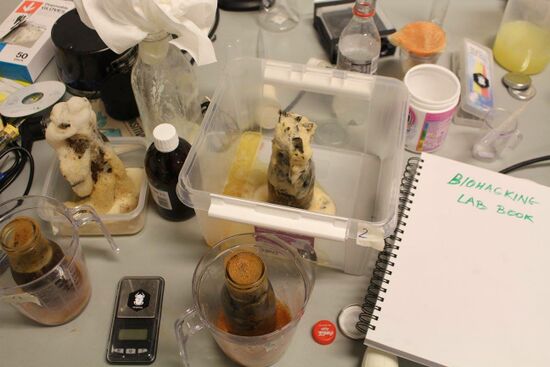
DURACIÓN: 2 días
DESCRIPCIÓN: Introducción y construcción de biointerfaces para controlar proyectos multimedia
OBJETIVOS: Conocer las bases de la fisiologia y como se puede medir para diseñar circuitos que nos permitan controlar programas y proyectos multimedia interactivos
ESTRUCTURA Y CONTENIDOS:
Dia 1: Introducción a la fisiología humana, electrofisiología y aplicaciones, Experimento: respuesta galvánica.
Dia 2: Biología molecular, bases y experimentos, Experimento: extracción de ADN y electroforesis.
Dia 3: Electrónica y circuitos de interface.
Dia 4: Programación interactiva. Processing y PureData, interface musical con experimentos biológicos con sonido y visualización.
DIRIGIDO A: Interesados en diseñar interfaces electrónicas que miden características biológicas y controlar multimedia.
TECNOLOGÍA UTILIZADA: Electrofisiología, electrónica, programación, microcontroladores.
4-5 hours each day plus break.
Por persona
4 tubos de ensayo 10 Cajas petri esteriles 5 baterias 9V Pinzas Caiman Mina de grafito 3mm uCU (Launchpad, nodeMCU, Arduino, etc) Jumpers Embudo Resistencias surtidas. Fototransistor Led verde ultrabrillante LM324 Protoboard Laptop IDE uCU (Arduino, Energia, etc) Processing Puredata Caballito tequilero. Alambre 22" diferentes colore, 4m INA122 trimpot 100k 500k 1M
Por Grupo
Gradilla Alcohol 96° Alcohol Isopropilico Agar-Agar Micropipeta puntas para micropipeta Licuadora Sal Piña Fresa Vodka Detergente
More about partners
Colombia The Road House Foundation
Chile
Festival Tsonami
Casa Plan
Peru
Asimtria, artist-run association
Instituto Superior de Música Público "Leandro Alviña Miranda" del Cusco
Asociación Pukllasunchis / Institución Educativa Pukllasunchis
Casa de la Cultura de Cuzco
Logo TransPiksel
Calendario
11th - 18th June: Manizales, Colombia
19th – 25th June: Valparaíso, Chile
27th- 4th: Cuzco, Perú

